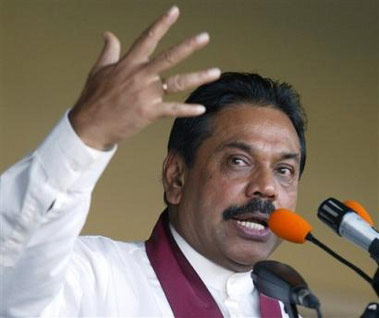 The Israeli government-appointed Winograd Commission has issued a strong indictment of the military and the political administration over its conduct in the failed 2006 war in Lebanon. The 621 page final report issued by retired judge Eliyahu Winograd yesterday did not have the mandate to place responsibilities with individuals but blamed the Israeli Defence Forces (IDF) and every Israeli government since 2000 for a series of failures, shortcomings and missed opportunities. Crucially, the Commission noted Israel did not succeed in translating the military conflict into any meaningful political achievements.
The Israeli government-appointed Winograd Commission has issued a strong indictment of the military and the political administration over its conduct in the failed 2006 war in Lebanon. The 621 page final report issued by retired judge Eliyahu Winograd yesterday did not have the mandate to place responsibilities with individuals but blamed the Israeli Defence Forces (IDF) and every Israeli government since 2000 for a series of failures, shortcomings and missed opportunities. Crucially, the Commission noted Israel did not succeed in translating the military conflict into any meaningful political achievements.The probe was dedicated to the memory of the soldiers and civilians who died in the month-long conflict that Israel calls the “Second Lebanon War”. Winograd found that the Israeli army went into battle unprepared, conducted flawed strategic planning and was unable to adjust to political realities. Among the report’s recommendations was for Israel’s government and the IDF to overhaul their strategies for making decisions during emergency situations and wars. It said there was a “genuine contradiction” between the army’s objectives in Lebanon and the limitations placed on troops due to fear of casualties. The report said “the General Staff failed to communicate to the political echelon that this manner of conduct is unsuitable for war."
The conflict began in July 2006 when Lebanese Hezbollah militants kidnapped two Israeli soldiers in a cross-border raid. Israel began a massive bombing campaign in southern Lebanon, but waited until the final days of the conflict before it launched a major ground offensive that failed to push Hezbollah out of southern Lebanon before a UN-mediated cease-fire went into effect. Before that happened Israel and Lebanon were on the verge of all-out war and several thousand people died on both sides. Much of northern Israel’s population of one million people were instructed to remain in shelters for much of the war's duration. The situation was also dire for the Lebanese as the Israelis kept up an air and naval blockade of the country until September.
After the war ended, public criticism grew as did demands for an independent enquiry into the conduct of the military, especially whether its initial response was proportionate to the kidnapping of two soldiers. The Israeli cabinet approved the establishment of the Winograd Committee in September 2006. The Commission was appointed due to a strong sense of a crisis and deep disappointment with the consequences of the campaign and the way it was conducted. Former judge Winograd chaired the committee and was joined by two professors and two retired army major-generals. The committee was tasked “to look into the preparation and conduct of the political and the security levels concerning all the dimensions of the Northern Campaign which started on July 12th 2006”. The committee began hearing testimony from witnesses from November 2006 onwards.
 The committee produced an interim report (pdf) in April 2007. Its main focus was on the decisions leading to the start of the war. It found the key mistakes were the lack of a “detailed, comprehensive and authorised military plan”, a refusal to contemplate a policy of containment and a vague and ambiguous communication of the mission goals. It laid the blame on Prime Minister Ehud Olmert, the Defence Minister and the army Chief of Staff and said that had these three acted better “the outcome of the war would have been significantly better”.
The committee produced an interim report (pdf) in April 2007. Its main focus was on the decisions leading to the start of the war. It found the key mistakes were the lack of a “detailed, comprehensive and authorised military plan”, a refusal to contemplate a policy of containment and a vague and ambiguous communication of the mission goals. It laid the blame on Prime Minister Ehud Olmert, the Defence Minister and the army Chief of Staff and said that had these three acted better “the outcome of the war would have been significantly better”.But the final report did not explicitly criticise Prime Minister Olmert. He would have been relieved by its conclusion which largely absolved the political masters of the war. The report backed the decision to launch a major ground offensive in the war’s last couple of days when it was clear a cease-fire was imminent. The panel called that move "essential," even though the "last-minute ground offensive in Lebanon did not improve Israel's position.” According to Anthony Loewenstein, the very fact that the Israeli government is likely to survive the scandal “reflects the dysfunctionality of the Jewish state”. However with none of Israel’s four ruling coalition partners wanting an early election, Olmert is unlikely to face more heat on the issue.

















.jpg/250px-Aboriginal_Art_Australia(3).jpg)











